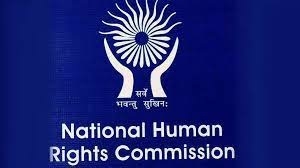most damning
| Date :17-Jul-2021 |

THE assertion of the High Court-appointed investigating committee of the National Human Rights Commission (NHRC) that the situation in West Bengal showed the ‘law of the ruler’ rather than rule of law, only endorses a damning truth that should make any political leader with moral scruples intact feel a sense of shame or even guilt. But Chief Minister Ms. Mamata Banerjee has chosen to dub that report as one full of political vendetta. That is very unfortunate.
The NHRC report only reiterates what had been said by countless persons and agencies about the terrible violence unleashed by political goons on civilians for not supporting the Trinamool Congress (TMC) in the recent legislative elections. Because Trinamool supremo Ms. Banerjee went into a stout denial mode, the honourable High Court appointed a special committee of the apex NHRC to probe into the allegations. That committee’s report has not stated the obvious, thus, endorsing the truth known to the nation for long.
Since the matter is subjudice, the honourable High Court will take care of the details and handle the legal aspects of the issue in its own manner. That legal battle may take its own course and own time and drag on for long. It will naturally draw national attention because what is involved in the issue is not just banditry by goon gangs, but also peaking of a political culture of vengeance that West Bengal was made to endure for the past several decades. It was the Leftist regime that started such a culture, and the TMC continued with it. This reality highlights the issue so aptly.
The nature of post-poll violence in West Bengal was really shocking, to say the least. Many observers of the scenario likened it to the ethnic purge of Kashmir thirty-plus years ago. They suspected that a similar effort was on in West Bengal -- to flush out those who dared to oppose the TMC. Initially, such allegations were considered one-sided and politically-motivated. Subsequently, however, truth started getting underlined time and again as different observers came up with similar assertions.
What was rather disturbing -- at least initially -- that the Central Government was refusing to react to the call of the moment to intervene in West Bengal. New Delhi refused to react to any instigation from Kolkata and maintained an outward cool that made many feel surprised and shocked. Subsequent developments, however, showed that the Centre was unwilling to step outside the constitutional groove though determined it was to handle the situation by following all the appropriate legal and administrative steps. This sense of restraint by the Centre later came to be appreciated by all, though initially most people were disturbed by New Delhi’s stoicness.
That restraint has now given the nation a wonderful judicial platform whose authority is beyond question. True, Madam, Banerjee tried to create a hurdle in the process by questioning the integrity of the judge assigned for the case. Later on, Bharatiya Janata Party leader Mr. Suvendu Adhikari, who defeated Madam Banerjee at Nandigram also requested the election petition to be moved out of West Bengal. But such details will not daunt the integrity of the judicial process which will continue through different stages and culminate after due and full consideration of issues involved.
The Centre had followed a similar route while sorting out the Ramjanmabhoomi case as well, waiting patiently for the administrative and judicial processes to move at their own pace, presenting the details in the most matter-of-factly manner. The final outcome was welcome since it came after the case had been pushed through various stages of the official process. Something similar is being sought to be achieved even in the case of West Bengal post-poll violence.There are two aspects of how the Centre is handling things here. One, the Centre wants to be politically correct for obvious reasons; and two, the Centre wants to help the common people have fullest faith in the constitutional and legal routes.